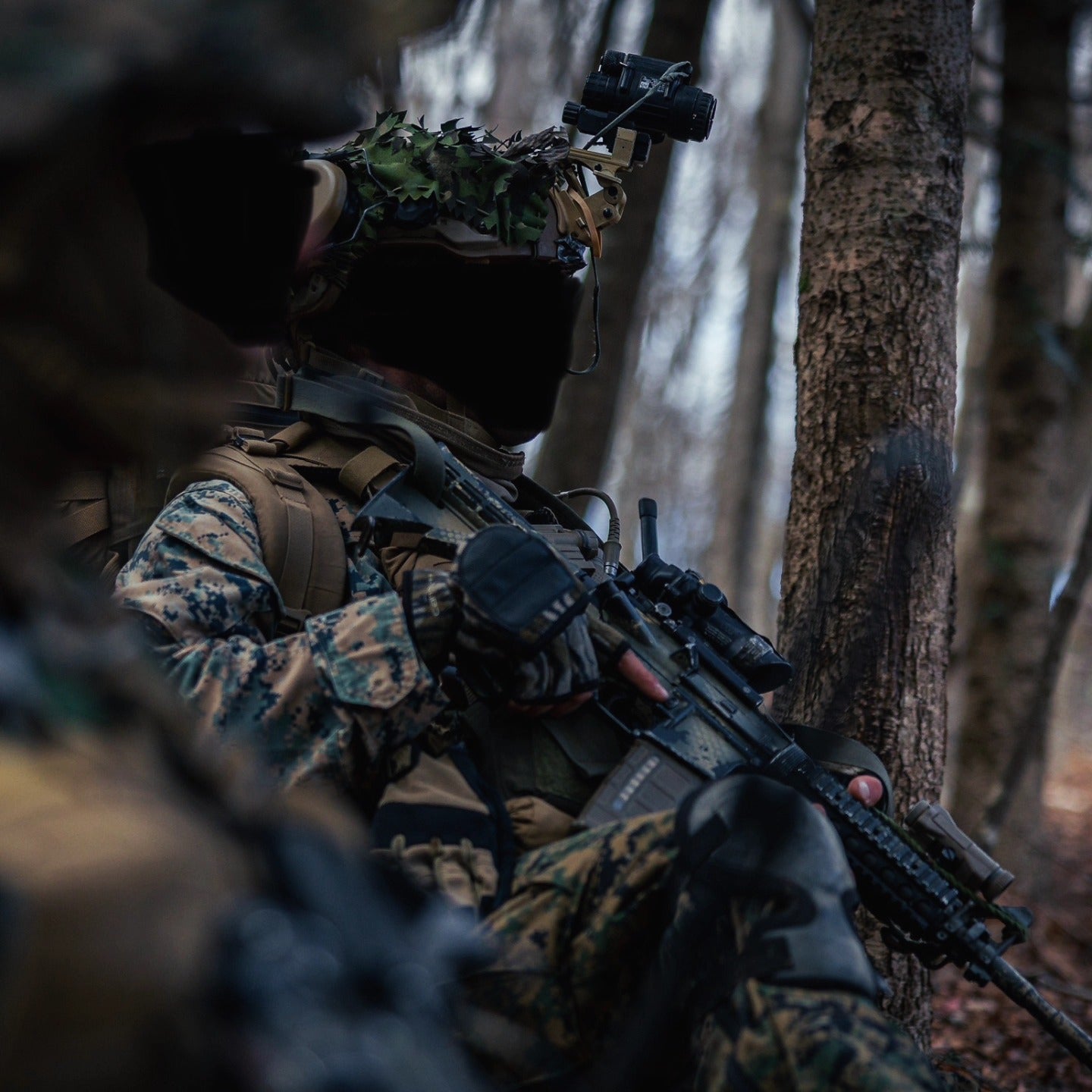The Essence of Military Camouflage
Military camouflage is more than just a pattern on a uniform—it is a survival strategy and a tool for tactical superiority.
From its earliest applications in warfare to its current role, camouflage has allowed armies to maintain a decisive advantage over their adversaries.
Camouflage During World War II
Origins and Development
World War II marked the beginning of systematic camouflage use in modern armies. Before this period, designers often created military uniforms in bright colors to symbolize national identity. However, the industrialization of warfare made this practice obsolete.
The Role of "Camoufleurs"
Recruiters enlisted artists and engineers to develop nature-inspired patterns. These teams studied the principles of light, shadow, and texture to create designs suited for different terrains.
Camouflage Nets and Coverings
Military forces deployed camouflage nets made of textiles and synthetic foliage to conceal installations, tanks, and naval vessels.
Specialized Uniforms
The German "splinter" camouflage pattern breaks up soldiers' silhouettes, making detection more difficult in forests and wooded areas.
Technical Innovations
During the conflict, camouflage evolved to meet a broader range of needs:
Camouflage for Vehicles and Aircraft
Military designers painted tanks and aircraft with irregular patterns to reduce aerial and ground visibility. These patterns also played on contrasts to disrupt enemy observers.
Dappled and Complex Patterns
Germany introduced sophisticated designs, such as dappled camouflage, which offered better adaptation to varied environments.
Widespread Adoption
Both the Allies and Axis powers recognized the importance of camouflage. Key battles, such as those on the Eastern Front and in North Africa, demonstrated that camouflage could directly influence combat outcomes.
-
Tactics: Allied forces used camouflage to deceive aerial reconnaissance and set up ambushes.
-
Lessons from War: This conflict established camouflage as a universal military standard.
Evolution During the Cold War (1947-1991)
New Threats, New Approaches
The Cold War introduced new combat environments and strategic challenges, requiring innovations in camouflage.
Tropical and Jungle Warfare
During the Vietnam War, designers created patterns like Tiger Stripe to help soldiers blend into dense vegetation.
Adaptation to Desert Environments
In arid and mountainous areas, specific camouflage patterns with sandy tones were created to reduce visibility in these terrains.

Urban Zones
Conflicts in populated areas led to the development of patterns that blended with concrete textures and building shadows.
Camouflage and Technology
With the emergence of thermal and infrared detectors, new techniques were developed:
Multispectral Camouflage
Uniforms and equipment were designed to minimize thermal signatures, a crucial advancement against night vision technologies.
Special Coatings for Vehicles
Tanks and helicopters were equipped with special paints reducing their infrared footprint.
21st-Century Camouflage: Advanced Materials and Technologies
Modern Uniforms
The advent of digital patterns has transformed military camouflage into an exact science.
Digital Patterns
-
Digital Camo: Uses pixels to create patterns that disrupt perception at different distances.
-
MultiCam: Used in multiple climatic zones and terrains.
Functional Enhancements
These uniforms include lightweight, weather-resistant materials, sometimes treated against infrared detection.
Adaptive Camouflage
Adaptive technologies represent the next step in camouflage evolution.
Urban Environment and New Challenges
With the rise of urban conflicts, new solutions are being developed:
Urban Camouflage
Patterns mimicking artificial environments, such as concrete, graffiti, or reflective glass, are being tested.
Electronic Concealment
Armies are working to obscure not only visibility but also electronic signals emitted by soldiers.
Civilian and Cultural Influence of Camouflage
Fashion and Popular Culture
Military camouflage has transcended its origins to become a cultural symbol.
Conclusion: A Continuous Revolution
Military camouflage embodies adaptability and innovation. From its beginnings in European forests to its futuristic applications, it remains a vital tool for armies worldwide.
With new technologies, this evolution is far from over.
For more information on modern military camouflage equipment, visit Nutsof.
FAQ
-
What are the main uses of military camouflage? Camouflage is used to conceal troops, vehicles, and infrastructure from enemy forces, reducing their visibility on the battlefield.
-
What are the most common modern patterns? MultiCam dominates due to its versatility and effectiveness.
-
Is camouflage only visual? No, it also includes thermal, infrared, and even electronic properties to counter modern detection technologies.
-
Why is camouflage popular outside the military? It has become a cultural symbol, influencing fashion, art, and even social movements due to its aesthetic and symbolism. (Hypebeast)
With its rich history and promising technological advancements, military camouflage remains a cornerstone of modern warfare and a fascinating reflection of human adaptability.
Best regards,
The Nutsof Team
Advanced Camouflage & Defense Solutions
🌐 www.nutsof.com
Follow us on Facebook and Instagram for the latest in advanced military camouflage technologies.


